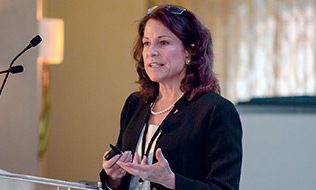

While managers of target-date funds have benefited from strong tailwinds in recent years, how can they manage the current environment of uncertainty?
Ruthann Pritchard, an institutional portfolio manager at Fidelity Investments, cited the favourable conditions of 2017 and the healthy markets of the last nine years as examples of trends that often end abruptly before transitioning to a different state.
Read: DC Plan Summit: Actionable next steps for plan sponsors
From the standpoint of asset allocation in target-date funds, Pritchard told participants at Benefits Canada’s Defined Contribution Plan Summit in February that the key is to have a strategic approach and a glide path that are resilient to such transitions.
Pritchard noted U.S. equities, investment-grade bonds and short-term investments have generated average yields of 6.9 per cent, 2.4 per cent and 0.5 per cent, respectively, since 1926. She warned, however, that seemingly diversified portfolios that are too reliant on the past may be vulnerable to changing market environments.
While the long-term averages suggest a solid performance over time, Pritchard identified four different types of market environments that may persist over longer-term cycles, often for many years. She cited research that found markets are in growth mode 17 per cent of the time, expansionary periods 52 per cent of the time, so-called stagflation 17 per cent of the time and crisis conditions 14 per cent of the time. Given the different scenarios, she highlighted the value of deconstructing historical financial market environments and coming up with portfolios and glide paths that are resilient to changing circumstances.
Read: DC Plan Summit: The long journey to better retirement outcomes
“Understanding different market environments and having humility in forecasting is critical to creating a resilient portfolio,” said Pritchard.
“Target-date managers should incorporate a flexible approach to changing environments, cyclical market views, time horizon and retirement readiness objectives. Flexibility is key to navigating capital market uncertainty and improving retirement outcomes.”
Get a PDF of this article.
Read more coverage from the 2018 DC Plan Summit.
